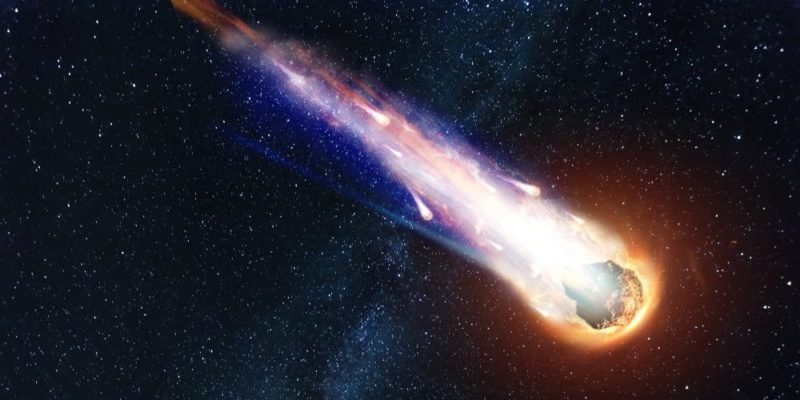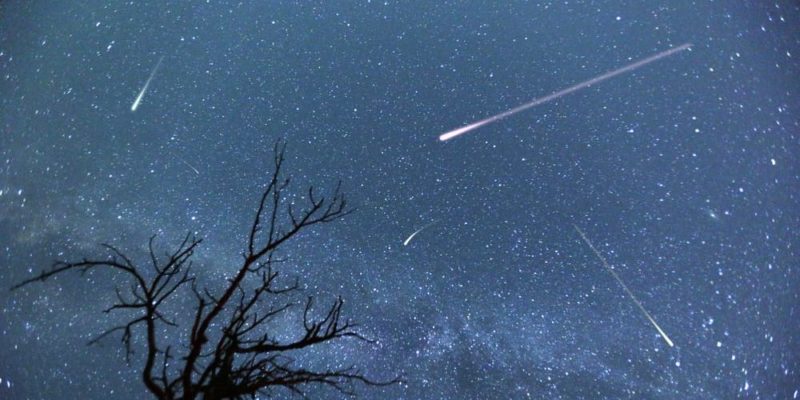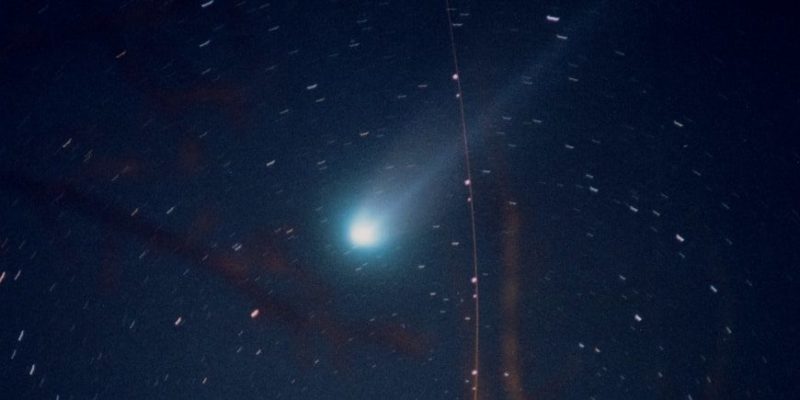We explain what comets are, their classification, their component parts and other characteristics. Also, Halley's Comet.

What are comets?
In astronomy, certain types of comets are known as comets. mobile astronomical objects members of the Solar System, which travel orbits of different trajectories and durations around the Sun. For the most part, comets are trans-Neptunian objects from conglomerates of icy objects known as the Kuiper Belt or, even further away, the Oort Cloud.
The comets trace extremely concentric orbits around the Sun in their journey many of them returning after hundreds and even thousands of years. Its typical image is that of a bright, oval body, which leaves behind a trail or coma composed of bright gases.
The only one that can be seen regularly from the surface of our planet is the famous Halley's Comet. However, the study of comets, especially after the invention of the telescope, has been a concern of astronomers since ancient times.
In some cases, the recurring appearance has been interpreted as a symptom of omens, a source of revelations, or a sign of the end of one era and the beginning of another. Myths such as that of the Star of Bethlehem in the Bible may have been mystical interpretations of these astral travelers.
See also: Asteroid
Types of kites
Comets can be classified based on two criteria, the first being the distance traveled in their orbits and the type of orbit they present. Thus, we can talk about:
- Short period or medium period comets. Those generally coming from the Kuiper Belt, located 50 Astronomical Units (AU) from the Sun
- Long period comets. Those that come from the Oort Cloud, almost a hundred times further away, at the very limits of the Solar System.
Similarly, we can distinguish between periodic and nonperiodic comets the first being those whose orbit takes 200 years or less to complete; and the second those whose orbit takes 200 years onwards. In the same way, Their orbits can be elliptical, parabolic or hyperbolic.
Finally, comets are classified according to their size, into the following categories:
- Dwarf comets Between 0 and 1.5 kilometers in diameter.
- Small kites Between 1.5 and 3 kilometers in diameter.
- Medium kites Between 3 and 6 kilometers in diameter.
- Big kites Between 6 and 10 kilometers in diameter.
- Giant comets Between 10 and 50 kilometers in diameter.
- “Goliath” kites Above 50 kilometers in diameter.
Parts of a comet

Comets are made up of two clearly recognizable parts:
- A core. Composed of the solid mass of the comet, where its component materials are found (usually ice and inorganic compounds, although with usual traces of hydrocarbons), and which is usually basically a moving rock.
- A comma. Also called hair, which is a trail several kilometers long, composed of gases ejected from the comet during its heating by the Sun, or of stellar dust and fragments that it leaves behind on its path. In many cases two different commas can be observed:
- The gaseous coma. Composed of water vapor that is ejected from the comet and that supports the opposite direction to the Sun's rays.
- The dust coma. Composed of solid remains of the comet that remain suspended in space, and when entering the Earth's atmosphere, when our planet passes through the orbit of a comet, it triggers meteor showers.
Characteristics of a comet
The comets have different shapes, generally irregular which can range from a few kilometers to several dozen in diameter. Its composition is one of the most common enigmas in astronomy, partially solved by the close observation of Halley's Comet on its last pass in 1986.
It is known today that comets contain a significant presence of frozen water, dry ice, ammonia, methane, iron, magnesium, sodium and silicates. Such a composition suggests that comets could have been part of the contributors of the organic matter that allowed the emergence of life on Earth.
In the same way, it is thought that they could be material witnesses of the very formation of the Solar System, and have within them physical secrets about the origin of the planets and the Sun itself.
Examples of kites

Some of the best known comets are:
- Halley's Comet. With a period of approximately 76 years, the only one visible from the surface of the Earth.
- Comet Hale-Bop One of the most observed of the 20th century, it sparked numerous rumors during its passage near Earth in 1997, given its enormous brilliance.
- Borrelly's Comet Named after its discoverer, the Frenchman Alphonse Borrelly, it was visited in 2001 by the North American space probe Deep Space 1.
- Comet Coggia A giant non-periodic specimen that could be observed with the naked eye from Earth in 1874. It visited our planet on two more occasions before disintegrating in 1882.
- Comet Shoemaker-Levy 9 Famous for having crashed into Jupiter in 1994, allowing us to witness the first documented extraterrestrial impact in history.
- Comet Hyakutake Discovered in January 1996, the year it passed very close to Earth: the closest a comet had passed in 200 years. It could be seen from all over the world and emitted significant amounts of X-rays. Its approximate period is 72,000 years.
Halley's Comet

It is the most famous of the comets and visits our planet every 75 years approximately. Named after Edmund Halley (1656-1742), the first scientist to describe its orbit and predict its appearance. However, it has been known and recorded in history since ancient times.
This comet was initially long-period, born in the distant Oort Cloud, but became trapped in the gravity of the planets of the Solar System, especially that of Venus. That's why, It is currently a short orbit. In 1986 it was the first comet to be visited by numerous space probes, which have since been renamed Halley's armada (Halley's Armada).
References
- “Comet” on Wikipedia.
- “How are comets born?” (video) on EducaccionTV.
- “Comets, what they are and where they come from” in AstroMía.
- “Comets and asteroids” in National Geographic.
- “Comets: Facts About the 'Dirty Snowballs' of Space” on Space.com.
- “Comets” in NASA Science.
- “Comet (Astronomy)” in The Encyclopaedia Britannica.





